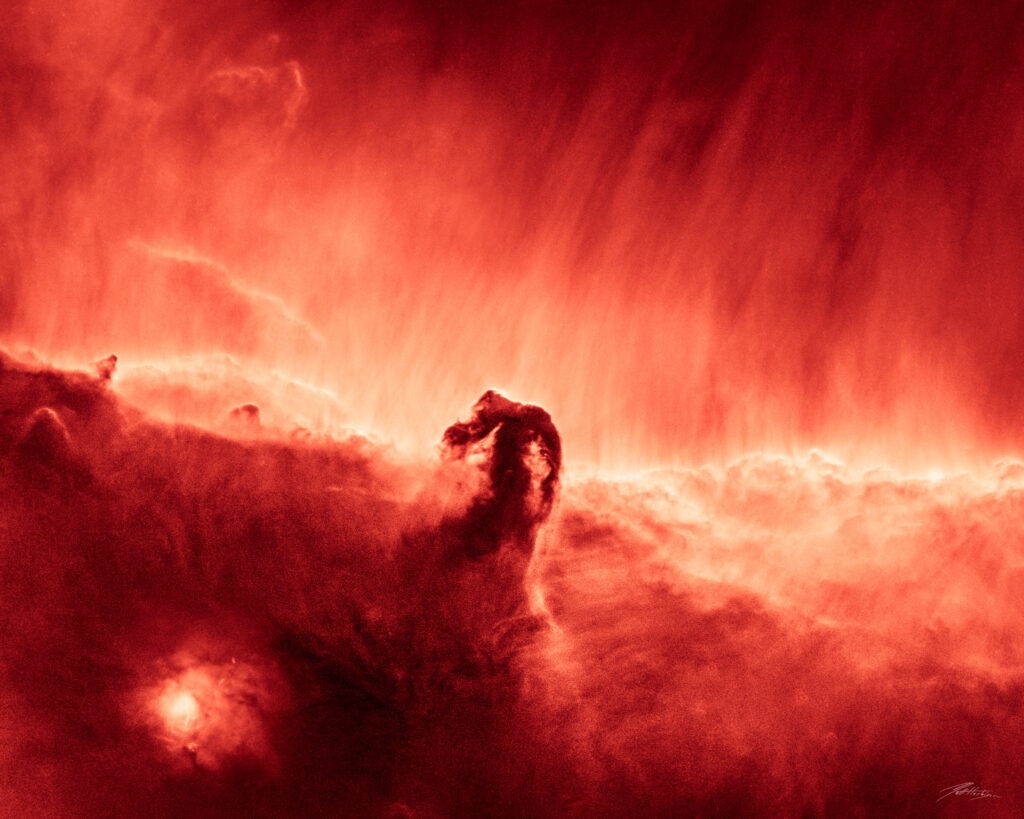Frequently Asked Questions – FAQ

Q- Why can’t I just look at a picture of it?
A- Sure you can, but I wanted to present it in its entirety at full resolution. While the internet is a fun place, there are limits as to how large an image file can accurately be displayed to a large number of people. This bit of code allows for the user (you) to zoom in and out freely at full resolution.
Q- Why not just take one picture and be done?
A- Because resolution is key. To resolve the tiny galaxies and details of blue and gold stars across this wide a field, the resolving power of a 130mm telescope will always outperform a 100mm camera lens. The advantage for the camera lens is the FOV (field of view). The camera lens can achieve the image in 1 frame, where my telescope requires 200 frames.
Q- Why is it so red?
A- First, let me say that all reproduced images taken by anyone with a telescope, camera, and filter will be subject to an editing process where a color value is set to the wavelength of light gathered and ultimately processed and displayed as the processor sees fit/appealing. With that being said, I edit for blue and gold stars. From there, color tends to fall into place. Would our eyes see this much red? Probably not, but this is an accurate representation of the range of color present… Google: ORION CONSTELLATION.
Q- Is this fake?
A- NO. The process of combining individual panels to create a mosaic is messy at best. Especially at this large a scale. Each panel I shoot represents 2.4 hours of light capture between four filters with a monochrome sensor that allow me to capture a particular wavelength of light. Luminance, Red, Green, and Blue images are then combined with calibration files to remove digital noise, thermal noise, and mechanical noise to create a master channel file. Once the channel masters are combined we arrive at an LRGB, color image. Each image is then solved with the help of star charts and given a name to be used later.
Q- Is this art or science?
A- Both. Captured images are sets of data (collections of photons) ordered from a subject onto a sensor. This is science. However, once we process that data, it is left to a human eye to adjust the data to their desired representation. I would call this art. I, like all astronomers and astrophotographers, work to represent what is present and therefore my end goal is to keep the image as close to reality as possible. However, I also strongly feel as though artistic license must be accounted for in any astrophoto (not just my own) as the final product is a series of choices made by the photographer or editor. Therefore my image is both, art and science. Art from my choice of color balance, rendering, and presentation. Science from my adherence to a process for creation and the massive amounts of data rigidly acquired.
Q- I see problems in the final mosaic.
A- Sure. I’ll probably be editing till the day I die. While I have tried to ensure the final merge is seamless when editing the final mosaic, there must be some give and take between panels with discrepancies because of differing seeing conditions. I of course corrected places that stood out, but there are some small inconsistences still present. It is not perfect, but I like to think I became better and better at acquisition as I captured the data. Seeing remained abysmal most of the time. (that’s a joke, or is it?)
Q- Can I have your telescope(s)?
A- No.
Q- Are you stupid?
A- Maybe. Definitely crazy.
You didn’t ask, but here are my thoughts anyway...
At present, I’m very pleased with my final mosaic. To me, it’s an incredibly compelling image. Countless hours of setup, endless amounts of processing time, and constant dedication have created something completely “other” in my estimation. It’s been a labor of love the ENTIRE time with many friendships created during the project, and I am really excited it is complete.
While I would love for it to be used for some type of astronomical research, ultimately I hope others look at it and see the cosmos in a whole new light.
